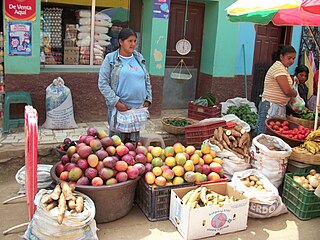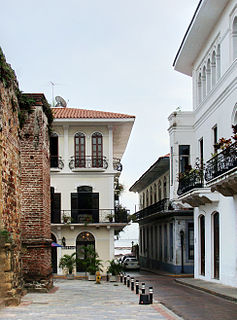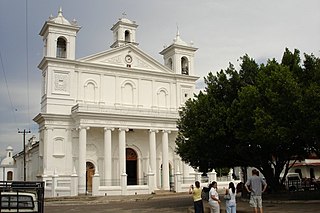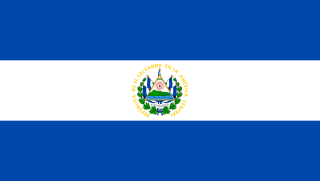
La Libertad is one of the departments of El Salvador and is located in the southwest of the country. The capital is Santa Tecla. It has area 1,653 km² and a population of more than 747,600 people. It was classified as a department on January 28, 1865. The population was settled on the Ulliman Plains, which is where rubber is harvested. The city was called "Nueva Ciudad de San Salvador" and made the department's capital on the same date as the department was declared. The department's capital was renamed Santa Tecla on December 22, 2003. The agricultural products that are cultivated are the basic grains, balsam, sugar cane, coffee, grass, hortenses plants, cocoa, and fruits. They also develop the bovine, equine and pig cattle, the raising of poultry and beekeeping. It also stands out the textile industry and the productions of candles, soaps, furniture, clothes, footwear, dairy products, and many diverse products and liquors.

Tourism in Mexico is a very important industry. Since the 1960s, it has been heavily promoted by the Mexican government, as "an industry without smokestacks." Mexico has traditionally been among the most visited countries in the world according to the World Tourism Organization, and it is the second-most visited country in the Americas, after the United States. In 2017, Mexico was ranked as the sixth-most visited country in the world for tourism activities. Mexico has a significant number of UNESCO World Heritage sites with the list including ancient ruins, colonial cities, and natural reserves, as well as a number of works of modern public and private architecture. Mexico has attracted foreign visitors beginning in the early nineteenth century, cultural festivals, colonial cities, nature reserves and the beach resorts. The nation's temperate climate and unique culture – a fusion of the European and the Mesoamerican are attractive to tourists. The peak tourism seasons in the country are during December and the mid-Summer, with brief surges during the week before Easter and Spring break, when many of the beach resort sites become popular destinations for college students from the United States.

Hangu Pass or Hanguguan is a pass separating the upper Yellow River and Wei valleys—the cradle of Chinese civilization and seat of its longtime capital Xi'an—from the fertile North China Plain. It lies on the south bank of the Yellow River just east of its eastward bend out of the Ordos Loop at Tong Pass in Shaanxi. It was the site of many battles during the Warring States and early imperial eras, when it was the chokepoint shielding Qin, Guanzhong, or Luoyang from outside attack. Today, the term Hangu Pass refers to two locations: firstly, to a museum park including a reconstruction of the gate in Lingbao county, Sanmenxia city, Henan and secondly, to the archaeological site of the gate in Xin’an county, Luoyang city, Henan.

Inkallaqta is a monumental Inca site in central Bolivia. It is located in the Cochabamba Department, Carrasco Province, Pocona Municipality, approximately 130 kilometers east of Cochabamba. It was most recently excavated by Larry Coben.He believes that the site was used to perform rites for the ceremonial calendar. The site has several important structures such as the Kallanka. It was the largest single roofed room in the western hemisphere when it was built, and measures 78 by 25 meters. There's also an ushnu or a ritual platform on the site. The Torreon of Inkallaqta is also located on this site. Located at the western side of the site this six sided structure supposedly had calendrical or astronomical significance. There is a zigzag wall immediately north of the site which is meant to mark and protect it.

The Lenca are an indigenous people of southwestern Honduras and eastern El Salvador in Central America. They once spoke the Lenca language, which is now extinct. In Honduras, the Lenca are the largest indigenous group, with an estimated population of 100,000. El Salvador's Lenca population is estimated at about 37,000.

Shibam, often referred to as Shibam Haḍramawt is a town in Yemen. With about 7,000 inhabitants, it is the seat of the District of Shibam in the Governorate of Hadhramaut. Known for its mudbrick-made high-rise buildings, it is referred to as the "Chicago of the Desert", or "Manhattan of the Desert".

Joya de Cerén is an archaeological site in La Libertad Department, El Salvador, featuring a pre-Columbian Maya farming village. The ancient Maya site of Joya de Cerén is located in the Zapotitán Valley 36,000 meters northwest of San Salvador, El Salvador. It is often referred to as the "Pompeii of the Americas", in comparison to the famed Ancient Roman ruins. This site is known for the excellent preservation of a Classic period settlement that was rapidly buried by the ashfall of an eruption of the Loma Caldera around A.D. 600. The relative abundance of paleoethnobotanical remains recovered at Joya de Cerén in comparison to other ancient Maya archaeological sites make Joya de Cerén particularly significant in the study of everyday life of ancient Maya agricultural communities. Of importance was the discovery of a manioc field, the first instance of manioc cultivation identified at a New World archaeological site. The site was thought to have been settled between A.D. 200 and A.D. 600. Joya de Cerén was entered on the UNESCO World Heritage List in 1993 and is a major tourist attraction in El Salvador.

Cacaopera is a municipality in the Morazán department of El Salvador.

Old Havana is the city-center (downtown) and one of the 15 municipalities forming Havana, Cuba. It has the second highest population density in the city and contains the core of the original city of Havana. The positions of the original Havana city walls are the modern boundaries of Old Havana.
The Cerrón Grande Hydroelectric Dam spans the Lempa River 78 km north of San Salvador in the municipalities of Potonico, (Chalatenango) and Jutiapa (Cabañas) in El Salvador.

Casco Viejo, also known as Casco Antiguo or San Felipe, is the historic district of Panama City. Completed and settled in 1673, it was built following the near-total destruction of the original Panamá city, Panamá Viejo in 1671, when the latter was attacked by pirates. It was designated a World Heritage Site in 1997.

Cara Sucia is a Mesoamerican archaeological site in western El Salvador. The site was first settled in the Preclassic period and was finally abandoned around 900 AD, in the Terminal Classic, when the Pipil people moved into the region, although there is no evidence of Pipil occupation at the site. It is thought that during the Early Preclassic, the site was occupied by people who spoke a forerunner of the Mayan languages, and during the Late Preclassic period the site has evidence of contact with Chalchuapa and with Kaminaljuyu in the Guatemalan Highlands.

Cihuatán is a major pre-Columbian archaeological site in central El Salvador. It was a very large city located in the extreme south of the Mesoamerican cultural area, and has been dated to the Early Postclassic period of Mesoamerican chronology.















